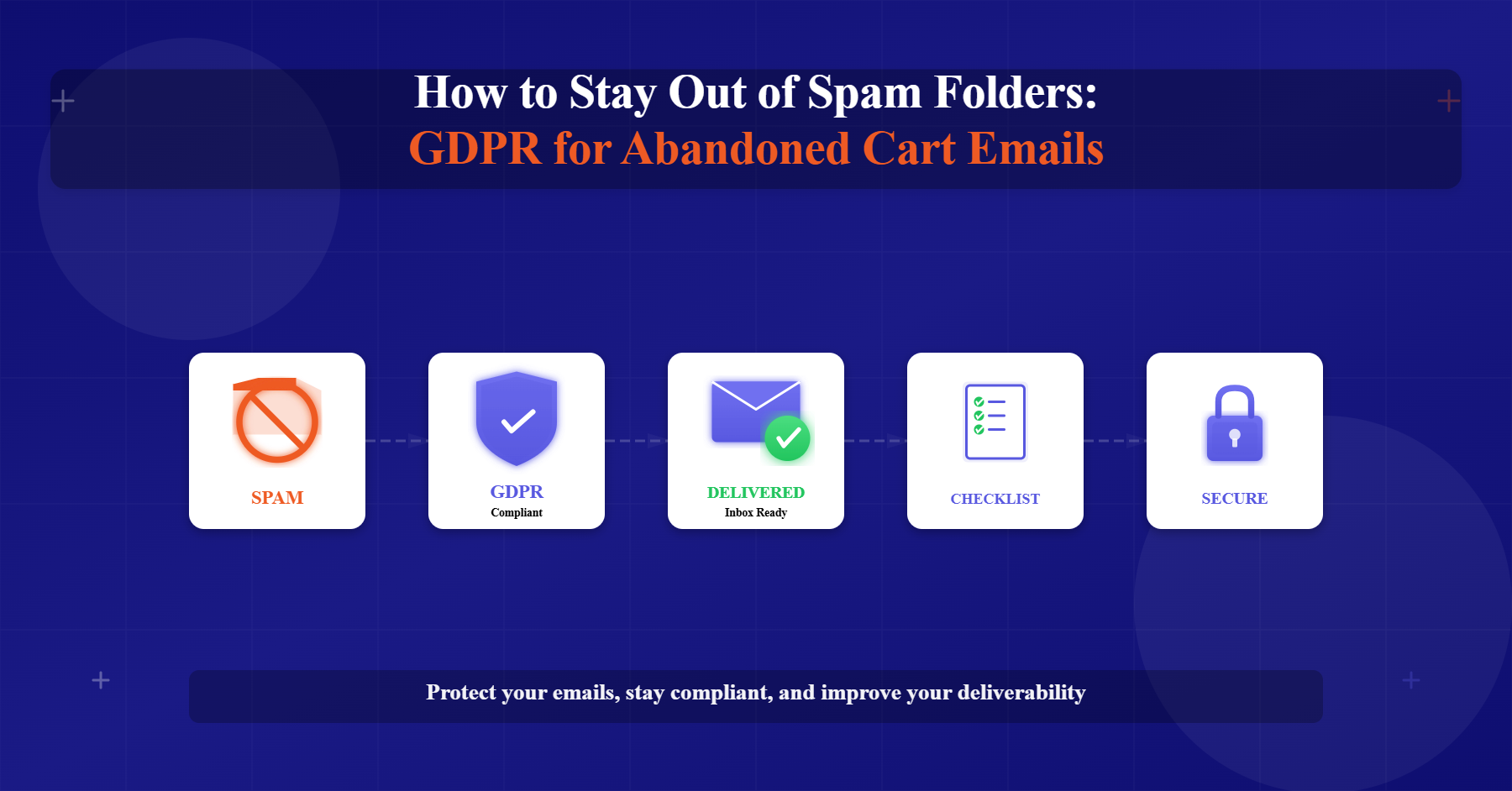Quick Summary
- Deliverability means inbox placement, not just delivery success. True email deliverability focuses on landing in the inbox rather than simply avoiding bounces or failures.
- Strengthen sender reputation through proper authentication. Implement and align SPF, DKIM, and DMARC, then add BIMI once authentication is solid to build trust and improve inbox visibility.
- Maintain list hygiene and subscriber consent. Regularly clean your lists, remove inactive or bounced addresses, and ensure recipients have opted in to reduce complaints and spam reports.
- Warm up domains and manage sending practices. Introduce new domains or IPs gradually, control sending volume, and maintain consistent cadence to avoid deliverability drops.
- Monitor and test deliverability performance. Use seed addresses, check public blocklists, and analyze email headers for authentication alignment while tracking inbox placement trends over time.
- Use the right tools and seek expert help when needed. Platforms like TargetBay Email & SMS can assist with monitoring, authentication setup, and suppression management, but ongoing spam issues or complex migrations may require a specialist.
Two identical campaigns, sent a week apart, can perform wildly differently. Many eCommerce marketers have lived the same headache: sales dip, yet nothing in the creative changed.
The culprit often isn’t your message. Turn your eyes on Email Deliverability. If your messages land in spam or never reach the inbox, even great offers can’t convert. The good news? Deliverability is measurable, fixable, and scalable with the right approach.
Email Deliverability vs. Delivery: Metrics That Matter
Delivery confirms that an email was accepted by the mailbox provider’s server. Email Deliverability goes further, it measures whether that message actually reached the inbox, stayed out of spam, and generated engagement. Delivery is table stakes; deliverability is the difference between being seen and being invisible.
The metrics that matter include delivery rate, hard and soft bounce rates, spam complaint rate, and inbox placement. Watch reputation indicators like domain and IP standing, authentication pass rates, and blocklist status. Engagement signals such as opens, clicks, replies, and read time confirm that real people value your messages. In eCommerce, those signals correlate strongly with revenue, repeat purchase, and lifetime value.
The Core Factors That Decide Inbox Placement
Mailbox providers use reputation to decide if you’re trustworthy. Your domain and IP reputation are built over time and shaped by sending consistency, complaint levels, bounce patterns, and engagement. New IPs and domains lack history, so they need controlled introduction and a steady cadence to earn trust.
Authentication is non-negotiable. SPF authorizes servers to send on your behalf. DKIM cryptographically signs your messages. DMARC aligns those checks to protect your brand from spoofing. When your visible “From” domain and your authenticated domains align, providers can reliably attribute your mail and reward you with better placement.
Content quality still matters, but it’s less about certain words and more about authenticity and clarity. Branded links, a healthy text-to-image balance, and a clear unsubscribe signal trust. Shorteners and mismatched link domains create suspicion. Cadence also matters. Spiky volume, erratic schedules, and sudden blasts after dormancy look risky. A predictable rhythm, matched to subscriber expectations, earns inbox consistency.
Finally, engagement is the feedback loop that sustains Email Deliverability. When recipients open, click, add to cart, and reply, providers infer value. Stale lists suppress engagement and degrade reputation; targeted, timely messages boost it.
Email Deliverability Best Practices eCommerce Brands Can Trust
Start with consent. Use explicit opt-in and make your value exchange clear. Avoid purchased lists entirely. Healthy list hygiene means regularly removing invalid addresses, honoring unsubscribes immediately, and suppressing chronic non-openers after re-engagement attempts.
Segment by lifecycle, recency, and behavioral signals. Smaller, targeted sends outperform blasts and keep complaint rates low. Tools like TargetBay Email & SMS make this easier with data-driven segments and an AI email agent to help you launch relevant campaigns without guesswork, which indirectly improves deliverability by boosting engagement.
Warm your domain and IP methodically, especially after a platform migration or brand refresh. Send first to your most engaged subscribers, then ramp daily or weekly. Keep the content simple and brand-aligned during the warm-up to build a clean reputation profile.
Control complaints and bounces with smart frequency capping, a visible unsubscribe link, and preference centers. Remove hard bounces instantly and tighten thresholds for soft bounces. Once your authentication is solid and consistent, implement BIMI to display a verified brand logo in supporting inboxes. It’s a downstream trust signal, but it can boost engagement when everything else is in alignment. Before deploying, you can verify your configuration using a bimi record lookup tool to ensure your domain’s BIMI settings are correctly aligned.
How to Run an Email Deliverability Check or Test
Build a small seed list using addresses across major mailbox providers and a few corporate domains. Send your campaign to the seed group alongside your main send, then check which folders received the message. Repeat this test for different segments and templates to see if certain combinations trigger filtering.
Use public blocklist lookups to ensure your sending IP and domains aren’t flagged. If you find a listing, pause high-volume sends to the impacted provider, correct the underlying cause, and request delisting if the blocklist offers that path. Keep in mind that most blocklist issues stem from poor list quality or sudden spikes.
Review your email headers after sending to confirm SPF pass, DKIM pass, and DMARC alignment. Authentication-Results fields tell you exactly how the receiving server evaluated your message. Confirm the visible From domain matches the authenticated domain chain so your identity is clear. If alignment fails, fix DNS immediately and retest before continuing with large sends.
Track inbox placement trends over several campaigns rather than reacting to a single data point. Consider time-of-day and segment-level differences. An onboarding sequence may perform differently than a sale reminder. TargetBay Email & SMS provides deliverability insights within your marketing flow so you can correlate content, cadence, and reputation changes with inbox placement.
Email Deliverability Tools: What to Use and When
You’ll need monitoring, spam testing, and reputation and DNS visibility. Monitoring shows delivery, bounce, complaint, and engagement trends. Spam testing reveals inbox placement gaps before a wide rollout. DNS visibility confirms that SPF, DKIM, and DMARC are configured and aligned for each sending domain and subdomain.
For eCommerce teams that prefer an integrated approach, TargetBay Email & SMS brings deliverability monitoring, suppression management, segmentation, testing, and authentication guidance into one workspace. The platform’s AI email agent accelerates campaign creation while preserving best practices, and its reporting helps you spot deliverability issues early. TargetBay Reviews and TargetBay Rewards amplify positive engagement that feeds back into deliverability, since more satisfied customers open, click, and share your emails.
If you manage DNS in-house, set up DMARC reporting to a monitored inbox, then analyze aggregate reports to ensure your mail streams and subdomains remain aligned. Keep a simple internal checklist for new domain additions to avoid accidental misalignment as your brand grows.
Email Deliverability in Salesforce Environments
If you send through Salesforce platforms, start with deliverability settings. Confirm that access is properly configured, sending domains are verified, and bounce handling is active. Ensure your marketer roles can preview and test with real headers so authentication checks are visible before launch.
Set up SPF and DKIM for each sending domain or subdomain used in Marketing Cloud or Account Engagement. Align the visible From domain with your authenticated domain, and publish a DMARC policy at p=none to start. As your alignment stabilizes, move to quarantine and eventually reject to protect your brand. Create a clear naming convention for business units and subdomains so each stream, transactional, lifecycle, and promotional has a consistent identity.
Plan your IP and domain strategy before scaling. Many senders do well on shared IP pools when volumes are modest and lists are healthy. Dedicated IPs make sense for high-volume programs or brands that require strict isolation. Warm any new IPs gradually, beginning with your most engaged segments and expanding in measured steps. Coordinate suppression lists across business units to avoid reintroducing problem addresses.
Finally, ensure subscriber keys and identity fields are consistent to avoid duplicate or conflicting profiles. Inconsistent identity leads to erratic engagement patterns, which can harm reputation. Tie campaign cadence to lifecycle stages and preference signals so every message earns its place in the inbox.
When to Hire an Email Deliverability Consultant
If your inbox placement drops and stays low for more than a few weeks, it’s time to get help. Other warning signs include persistent spam foldering at a single provider, a sudden spike in hard bounces, blocklist hits, or a major platform or domain migration on the horizon. High-volume seasonal senders often benefit from proactive planning as well.
A deliverability specialist will audit your data, list sources, DNS, authentication, and content, then create a remediation plan. They’ll advise on IP warm-up, segment prioritization, and cadence while monitoring provider-specific signals. They can also communicate with mailbox providers when appropriate.
Choose someone who can read headers fluently, understands your ESP or CRM configuration, and has handled similar volumes and brand profiles. Ask for references and a clear plan with milestones and exit criteria. The goal isn’t a mystery fix; it’s a transparent process that your team can sustain.
Step-by-Step Remediation Playbook for Email Deliverability
Begin with diagnosis. Compare performance by provider, segment, and campaign type to pinpoint where deterioration started. Look for data changes such as new list sources, a creative overhaul, or a schedule change that correlates with the drop.
Authenticate without compromise. Verify SPF, rotate and align DKIM, and publish DMARC with alignment enforced across your sending domains and subdomains. Use a reporting address to gather aggregate DMARC data. Once stable, add BIMI with a verified logo to reinforce brand trust.
Warm up deliberately. Start with your most engaged subscribers and send consistently on a predictable cadence. Increase volume in steps, maintaining strong engagement at each stage before expanding. Keep content straightforward and branded during this phase.
Optimize content and list quality in tandem. Clean invalids and chronically inactive addresses. Use a real reply-to address, match visible link domains to your brand, and avoid link shorteners. Keep a clear unsubscribe link and a physical mailing address in the footer. Short, value-rich emails often earn better engagement than long, image-heavy messages.
Test and iterate. Send to seed addresses every time you change a key variable. Track inbox placement patterns and adjust cadence, segments, and creative based on what the data shows. In TargetBay Email & SMS, pair testing with automated suppression and segmentation rules so improvements stick.
Conclusion
Good inbox placement is earned with a calculated optimization of email deliverability. When you control authentication, reputation, content discipline, cadence, and engagement, the inbox becomes predictable, and predictable turns into profitable.
eCommerce teams thrive when strategy and tooling reinforce each other. With TargetBay Email & SMS for sending and deliverability visibility, TargetBay Reviews to gather authentic social proof, and TargetBay Rewards to deepen loyalty, you create a virtuous cycle of engagement that lifts deliverability and revenue together.
Frequently Asked Questions
How can I run an email deliverability test for free?
You can create a manual seed list across major mailbox providers and send your campaign to those addresses to see where it lands. Check your message headers to confirm SPF and DKIM pass and that DMARC alignment is in place. Use public blocklist lookup sites to ensure your domains and IPs are clear, and review mailbox provider postmaster dashboards where available. TargetBay Email & SMS helps centralize these checks alongside your campaign reports.
Do I need a dedicated IP for better deliverability?
Not always. For modest volumes and strong list hygiene, reputable shared pools perform very well and ramp faster. Choose a dedicated IP if you send high volumes, require strict isolation, or want full control of reputation. No matter the path, warm methodically and maintain consistent cadence.
What benchmarks should I aim for?
Many brands target a delivery rate above 98 percent, hard bounces below 0.5 percent, and spam complaints below 0.1 percent. More importantly, maintain strong authentication, alignment, and engagement. A clean list, segmented sends, and consistent schedules are the bedrock of healthy Email Deliverability.






